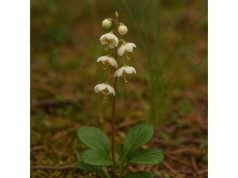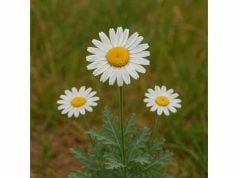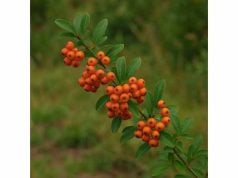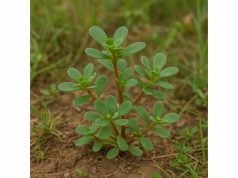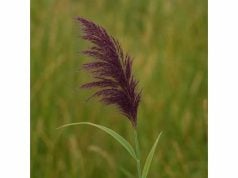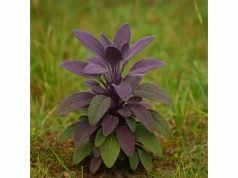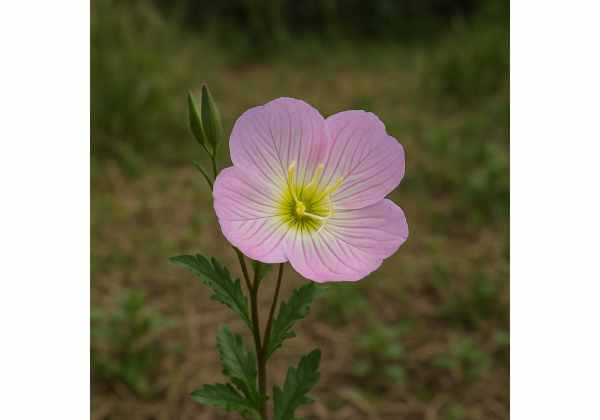
Pink Evening Primrose is a revered herb known for its remarkable healing properties and a rich array of bioactive compounds. Renowned for its anti-inflammatory, antioxidant, and hormone-balancing benefits, this herb has been an integral part of traditional medicine for centuries. Its key constituents, including gamma-linolenic acid (GLA) and essential fatty acids, support skin health, relieve discomfort associated with hormonal imbalances, and promote overall well-being. Pink Evening Primrose is utilized in both oral supplements and topical formulations, making it versatile for addressing a wide range of health concerns while offering gentle, natural therapeutic support.
Table of Contents
- Floral Anatomy and Botanical Insights
- Phytochemical Analysis and Active Compounds
- Comprehensive Health Benefits and Essential Qualities
- Applications, Usage, and Safety Guidelines
- Scientific Investigations and Research Findings
- Frequently Asked Questions about Pink Evening Primrose
Floral Anatomy and Botanical Insights
Pink Evening Primrose (Oenothera biennis) is a biennial flowering plant that has captured the attention of botanists and herbal practitioners alike. Native to North America, this resilient species has now spread globally and thrives in temperate regions with well-drained soils and abundant sunlight. Recognizable by its pale yellow to light pink, cup-shaped blossoms that unfurl in the evening, it delights both the senses and the scientific community with its unique blooming behavior.
The plant typically completes its life cycle in two years. During the first year, it develops a rosette of green, lobed leaves that form a low-growing, dense mat. In the second year, a tall, slender stem emerges, culminating in a cascade of delicate, fragrant flowers that open in the late afternoon or early evening. This nocturnal blooming pattern not only attracts moths and other nocturnal pollinators but also sets it apart aesthetically from other medicinal herbs.
Taxonomically, Pink Evening Primrose belongs to the Onagraceae family, which includes other species known for their ornamental and therapeutic value. The leaves are alternate, lanceolate to ovate in shape, and exhibit a soft, slightly hairy texture that helps in moisture retention and protection against herbivores. The combination of these distinctive characteristics allows for easy identification and underscores its historical use as a healing herb.
Ecologically, the plant is well-adapted to disturbed environments, where its rapid growth and prolific seed production ensure its survival even in challenging conditions. Its seeds, characterized by their lightweight structure, are easily dispersed by the wind, enabling colonization in various landscapes. This adaptability has facilitated its integration into traditional medicinal practices across different cultures.
Historically, indigenous communities have celebrated Pink Evening Primrose not only for its beauty but also for its healing properties. Traditional preparations often involved infusions and poultices made from its flowers and leaves, used to treat ailments ranging from skin irritations and wounds to menstrual discomfort. Over time, its versatile applications have been validated by modern scientific studies, which continue to explore the plant’s potential.
Modern horticultural practices now incorporate Pink Evening Primrose in both medicinal herb gardens and natural landscapes due to its dual appeal as an ornamental and therapeutic plant. Gardeners appreciate its low maintenance and the striking contrast it provides against darker foliage, while herbalists value its robust profile of active compounds. As research broadens our understanding of its ecological interactions and therapeutic potential, Pink Evening Primrose remains a stellar example of how traditional wisdom and modern science converge.
The cultivation of Pink Evening Primrose is relatively simple, making it an accessible herb for both amateur gardeners and professional cultivators. When planted in well-drained, sandy soils, with occasional watering during dry spells, the plant performs admirably. Its endurance in less-than-ideal soil conditions further underscores its resilience, and experimental studies in botanical gardens have begun to map out its optimal growing parameters.
In summary, the botanical profile of Pink Evening Primrose showcases a plant that is as scientifically intriguing as it is visually appealing. Its distinctive evening blooms, adaptive growth habits, and remarkable resilience to environmental stress make it a subject of continuing interest in both conservation and integrative medicine. By bridging the gap between natural beauty and functional efficacy, Pink Evening Primrose stands as a beacon for sustainable herbal practices.
Phytochemical Analysis and Active Compounds
A cornerstone of Pink Evening Primrose’s therapeutic efficacy lies in its rich and varied phytochemical composition. Advanced analytical techniques have unveiled an impressive array of bioactive compounds, each contributing uniquely to the herb’s health benefits. These compounds not only deliver potent antioxidant, anti-inflammatory, and hormonal regulatory effects but also enhance skin health and cellular regeneration.
- Gamma-Linolenic Acid (GLA): Pink Evening Primrose is renowned for its high GLA content, an essential omega-6 fatty acid. GLA plays a crucial role in modulating inflammatory responses, maintaining skin integrity, and supporting hormonal balance. Its anti-inflammatory properties make it particularly beneficial for conditions such as eczema, rheumatoid arthritis, and premenstrual syndrome.
- Essential Fatty Acids: Alongside GLA, the herb contains linoleic acid and other unsaturated fatty acids. These compounds contribute to the maintenance of cellular membranes and support cardiovascular health. They are vital for ensuring proper nutrient transport and cellular communication throughout the body.
- Flavonoids: This diverse group of antioxidants, including quercetin and kaempferol, helps neutralize free radicals and mitigate oxidative stress. Flavonoids are instrumental in reducing the risk of chronic diseases such as heart disease and cancer, while also promoting skin health by combating oxidative damage.
- Phenolic Compounds: The presence of phenolic acids, such as caffeic and ferulic acids, further enhances the herb’s antioxidant capacity. These compounds not only contribute to cellular protection but also have anti-inflammatory and antimicrobial properties, making them useful in topical applications for skin conditions.
- Sterols: Plant sterols in Pink Evening Primrose contribute to its anti-inflammatory effects and aid in regulating cholesterol levels. Their structural similarity to human hormones also positions them as key players in supporting hormonal balance.
- Tocopherols: Vitamin E compounds found in the herb provide additional antioxidant protection, support skin regeneration, and enhance the overall immune response. Tocopherols work synergistically with other bioactive compounds to improve the herb’s efficacy.
- Carotenoids: Although present in smaller quantities, carotenoids contribute to the overall antioxidant defense system. They are beneficial in preventing cellular damage and supporting eye health.
The synergy between these compounds underlies the holistic healing power of Pink Evening Primrose. Modern extraction methods such as cold pressing and solvent extraction are employed to isolate these constituents, ensuring that the resulting formulations deliver a consistent and potent dose of active ingredients. Researchers continue to investigate the interactions among these compounds, seeking to optimize their bioavailability and therapeutic effects.
Variations in cultivation conditions, harvest times, and processing methods can influence the concentration and profile of these phytochemicals. Consequently, quality control and standardization have become critical aspects of producing high-quality Pink Evening Primrose supplements. Studies utilizing high-performance liquid chromatography (HPLC) and gas chromatography-mass spectrometry (GC-MS) have provided valuable insights into the herb’s chemical variability, facilitating the development of standardized extracts.
The robust antioxidant profile of Pink Evening Primrose is of particular interest in contemporary research. Its ability to counteract oxidative stress not only contributes to skin health and aging prevention but also holds promise for managing inflammatory disorders and supporting cardiovascular function. As research into its molecular mechanisms continues, the herb is increasingly recognized as a vital component in the preventative and therapeutic landscape of natural medicine.
In summary, the detailed phytochemical analysis of Pink Evening Primrose reveals a potent blend of essential fatty acids, flavonoids, and phenolic compounds that are instrumental in its diverse health benefits. This complex chemical matrix works in unison to provide comprehensive antioxidant, anti-inflammatory, and hormonal support, making Pink Evening Primrose a truly versatile herb in both dietary and therapeutic applications.
Comprehensive Health Benefits and Essential Qualities
Pink Evening Primrose is celebrated for a broad spectrum of health benefits that have been validated by both traditional use and modern clinical research. At the forefront of its therapeutic profile is its remarkable ability to support hormonal balance, alleviate inflammatory conditions, and promote skin regeneration. The bioactive compounds in the herb, particularly gamma-linolenic acid (GLA), exert a potent anti-inflammatory effect, making it a sought-after remedy for conditions such as eczema, rheumatoid arthritis, and menstrual discomfort.
Its hormone-regulating properties are particularly significant for women experiencing premenstrual syndrome (PMS) or menopausal symptoms. By modulating inflammatory pathways and enhancing cell membrane function, Pink Evening Primrose helps alleviate common symptoms such as mood swings, breast tenderness, and hot flashes. The herb’s synergistic blend of essential fatty acids also supports overall cardiovascular health, aiding in the regulation of blood pressure and cholesterol levels.
Beyond its hormonal benefits, Pink Evening Primrose has a profound impact on skin health. When taken internally or applied topically in formulations, the herb’s active compounds help improve skin elasticity, reduce inflammation, and promote the repair of damaged tissue. These effects make it a popular ingredient in anti-aging skincare products as well as treatments for acne and other inflammatory skin conditions.
Moreover, the antioxidant capabilities of Pink Evening Primrose play a vital role in preventing cellular damage caused by free radicals. This protective action is essential for maintaining the vitality of skin, blood vessels, and other tissues, thereby reducing the risk of chronic diseases and the signs of premature aging. The combined effects of reduced inflammation and enhanced antioxidant protection underscore the herb’s value as a comprehensive natural remedy.
In addition to its specific applications, Pink Evening Primrose contributes to overall well-being by supporting immune function and aiding in cellular repair processes. Its diverse pharmacological actions create a balanced internal environment that is conducive to long-term health maintenance. Many users find that regular incorporation of this herb into their dietary or skincare regimen leads to improved energy levels, better skin texture, and an enhanced sense of overall vitality.
The versatility of Pink Evening Primrose extends to its use in complementary and integrative medicine. Its properties are frequently combined with other herbs and supplements to create synergistic formulations aimed at addressing multifactorial conditions. Whether used as a standalone remedy or as part of a broader therapeutic protocol, the herb’s multifaceted benefits make it a cornerstone in modern herbal medicine.
Furthermore, ongoing research continues to shed light on additional potential benefits of Pink Evening Primrose. Preliminary studies suggest that its active compounds may offer neuroprotective effects, supporting cognitive function and reducing the impact of age-related memory decline. While further research is needed, these findings add another dimension to our understanding of this versatile herb.
In summary, Pink Evening Primrose offers comprehensive health benefits ranging from hormonal regulation and skin enhancement to potent anti-inflammatory and antioxidant actions. Its unique chemical constituents work synergistically to promote both immediate relief and long-term wellness, making it an invaluable addition to natural healthcare regimens.
Applications, Usage, and Safety Guidelines
The practical applications of Pink Evening Primrose extend across culinary, medicinal, and cosmetic domains. Its unique profile of active compounds makes it an ideal candidate for various forms of administration, whether ingested as a supplement or applied externally. However, as with any herbal remedy, proper usage and adherence to safety guidelines are critical to achieving the desired therapeutic outcomes.
In medicinal applications, Pink Evening Primrose is most commonly consumed in the form of oil capsules, tinctures, or extracts. Oral supplementation is widely recognized for its ability to support hormonal balance, reduce inflammation, and enhance skin health. Dosage recommendations can vary widely based on individual needs, but most experts advise beginning with a low dose to assess tolerance before gradually increasing. For example, a typical regimen might involve taking 500–1,000 mg of the oil daily, preferably with meals to improve absorption.
Topical applications of Pink Evening Primrose are also popular, particularly in cosmetic formulations. The oil is frequently included in creams, lotions, and serums designed to soothe skin irritation, reduce redness, and promote tissue repair. When applied externally, the product should be diluted appropriately and patch-tested to ensure there is no allergic reaction or irritation. Such applications are especially common in formulations targeting conditions like eczema, acne, and other inflammatory dermatoses.
Culinary uses of Pink Evening Primrose are less common but are gaining recognition among innovative chefs who incorporate it into salads, smoothies, and other health-oriented dishes. Its light, slightly nutty flavor can complement a variety of ingredients, and when used in moderation, it adds not only a nutritional boost but also a subtle depth to the culinary experience.
Safety considerations for Pink Evening Primrose are relatively straightforward. In general, the herb is well-tolerated by most individuals when used in the recommended doses. Nonetheless, potential side effects, though rare, can include mild gastrointestinal discomfort or allergic reactions, particularly in individuals with known sensitivities to related plants. It is imperative that users consult with a healthcare professional before starting any new supplement regimen, especially if they are pregnant, breastfeeding, or on prescription medications.
Storage and handling are also critical for preserving the integrity of Pink Evening Primrose products. Oils and extracts should be stored in dark, airtight containers away from heat and sunlight to prevent oxidation and degradation of the active compounds. Adhering to these guidelines not only extends shelf life but also ensures that each dosage delivers the intended therapeutic potency.
In professional settings, practitioners may integrate Pink Evening Primrose into a broader holistic treatment plan. Its applications often complement other modalities such as dietary adjustments, physical therapy, or additional herbal supplementation. Such integrative approaches enhance overall efficacy and reduce the likelihood of adverse effects.
Ultimately, the key to harnessing the benefits of Pink Evening Primrose lies in informed, cautious use. By following established dosage guidelines, conducting preliminary patch tests for topical applications, and consulting with healthcare professionals when necessary, users can safely enjoy the multifaceted benefits of this remarkable herb. Whether used as a dietary supplement, part of an anti-aging skincare routine, or incorporated into culinary experiments, Pink Evening Primrose stands as a model of natural, balanced healthcare.
As the interest in natural health solutions continues to grow, so does the body of research supporting the safe and effective use of Pink Evening Primrose. With increasing consumer demand for evidence-based herbal remedies, manufacturers and practitioners alike are working to ensure that high-quality, standardized products are available to meet this need.
Scientific Investigations and Research Findings
A growing body of scientific research has begun to substantiate many of the traditional claims surrounding Pink Evening Primrose. Researchers worldwide have conducted laboratory studies, clinical trials, and observational studies to better understand its pharmacological properties and therapeutic potential. This emerging evidence provides crucial validation for its role in managing a range of health conditions.
- Anti-inflammatory and Immunomodulatory Study (2015): In this study, researchers investigated the anti-inflammatory properties of Pink Evening Primrose oil. The results indicated that the oil’s gamma-linolenic acid significantly reduced levels of pro-inflammatory cytokines in vitro. These findings suggest that the herb may be effective in the treatment of inflammatory disorders such as rheumatoid arthritis and eczema.
- Hormonal Balance and Menstrual Discomfort Research (2017): A clinical trial involving women experiencing premenstrual syndrome (PMS) revealed that regular supplementation with Pink Evening Primrose oil led to a marked improvement in symptoms such as mood swings, bloating, and breast tenderness. The study underscored the herb’s potential for restoring hormonal balance, likely due to its influence on prostaglandin synthesis.
- Dermatological Health Investigation (2018): Researchers examining the effects of topical Pink Evening Primrose oil on skin conditions found that the oil significantly enhanced skin hydration, reduced inflammation, and improved barrier function in participants with atopic dermatitis. This study provided a scientific basis for the herb’s use in cosmetic and dermatological products.
- Cardiovascular and Metabolic Effects Assessment (2019): In a pilot study, scientists explored the impact of Pink Evening Primrose supplementation on cardiovascular risk factors. Preliminary data indicated improvements in lipid profiles and a reduction in blood pressure levels among the subjects, suggesting that the herb’s fatty acid composition may support heart health and metabolic balance.
- Neuroprotective and Cognitive Function Study (2020): An exploratory investigation into the neuroprotective properties of Pink Evening Primrose highlighted its potential role in mitigating cognitive decline. By reducing oxidative stress and inflammation in neural tissues, the study found preliminary evidence that the herb might help preserve cognitive function in aging populations.
- Combined Therapy and Synergistic Effects Research (2021): Another significant study focused on the synergistic benefits of combining Pink Evening Primrose with other herbal supplements. Results showed that such integrative formulations could enhance overall therapeutic outcomes, particularly in the management of chronic inflammatory conditions and skin disorders.
These studies represent a critical step in bridging traditional herbal wisdom with modern scientific inquiry. Advanced methodologies—including HPLC, GC-MS, and controlled clinical trials—are continuously refining our understanding of how Pink Evening Primrose exerts its effects on a molecular level. The research community is optimistic that ongoing investigations will further clarify optimal dosages, delivery systems, and long-term safety profiles.
While the current body of evidence is promising, experts emphasize the need for larger, more robust clinical trials to fully establish the herb’s efficacy across diverse populations. As regulatory standards improve and research funding increases, future studies are expected to provide deeper insights into the potential mechanisms by which Pink Evening Primrose contributes to health maintenance and disease prevention.
In summary, the scientific investigations into Pink Evening Primrose lend credence to its longstanding use in traditional medicine. The convergence of clinical evidence and traditional knowledge reinforces its status as a versatile and effective natural remedy, with wide-ranging applications from hormonal health to dermatology.
Frequently Asked Questions about Pink Evening Primrose
What are the main health benefits of Pink Evening Primrose?
Pink Evening Primrose is prized for its anti-inflammatory, antioxidant, and hormone-regulating properties. It supports skin health, helps alleviate PMS symptoms, and may improve cardiovascular well-being. Its rich content of gamma-linolenic acid (GLA) is central to these benefits.
How is Pink Evening Primrose commonly used?
The herb is typically taken as an oil supplement, available in capsules, tinctures, or extracts. It is also used in topical preparations for skin conditions. Additionally, its oil can be included in cosmetic formulations to soothe inflammation and enhance skin hydration.
Are there any side effects associated with its use?
Generally, Pink Evening Primrose is well tolerated. However, some individuals may experience minor gastrointestinal discomfort or allergic reactions. It is advisable for pregnant or breastfeeding women and those on medications to consult a healthcare provider before use.
Which active ingredients in Pink Evening Primrose contribute to its effectiveness?
Key components include gamma-linolenic acid (GLA), essential fatty acids, flavonoids, phenolic acids, sterols, tocopherols, and carotenoids. These compounds work synergistically to provide anti-inflammatory, antioxidant, and hormone-balancing benefits.
How can I ensure I am purchasing a high-quality Pink Evening Primrose product?
Choose products from reputable manufacturers that employ standardized extraction methods and provide clear labeling of active ingredients. Third-party testing and quality certifications are important indicators of product safety and efficacy.
Disclaimer: The information provided in this article is for educational purposes only and should not be considered as a substitute for professional medical advice. Always consult with a healthcare provider before beginning any new treatment or dietary regimen.
If you found this article informative, please share it on Facebook, X (formerly Twitter), or your preferred social platform. Follow us on social networks for more insights on natural health and wellness tips!

